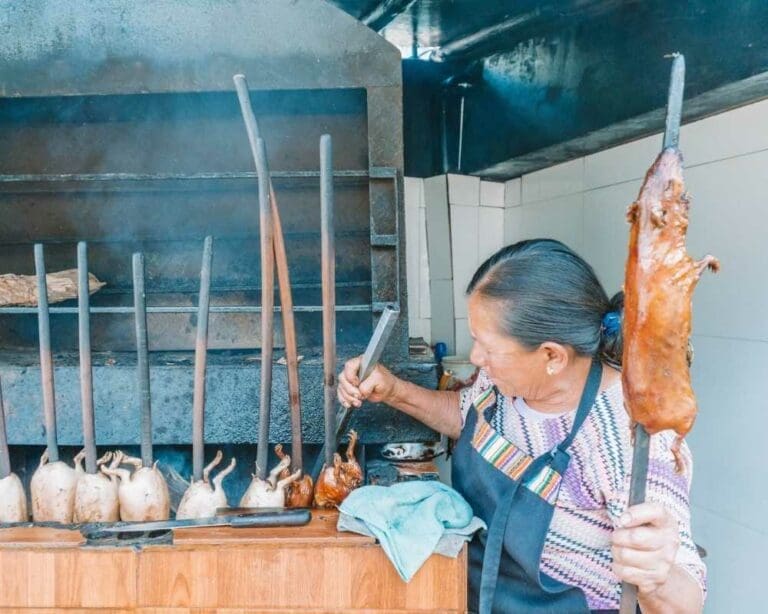40 dishes to try in Peru: a flavor-filled journey through Peru’s culinary landscape
Peruvian food is one of the reasons why I was drawn to living in Peru for more than a year. Here is a list of the best food in Peru to try for your trip!
Peru’s culinary tapestry is woven with ingredients that defy imagination at the crossroads of the Andes, the Amazon, and the vast Pacific.
From the zest of ceviche, kissed by the ocean’s embrace, to the earthy allure of quinoa cultivated in high-altitude fields, your taste buds are in for an unparalleled adventure.
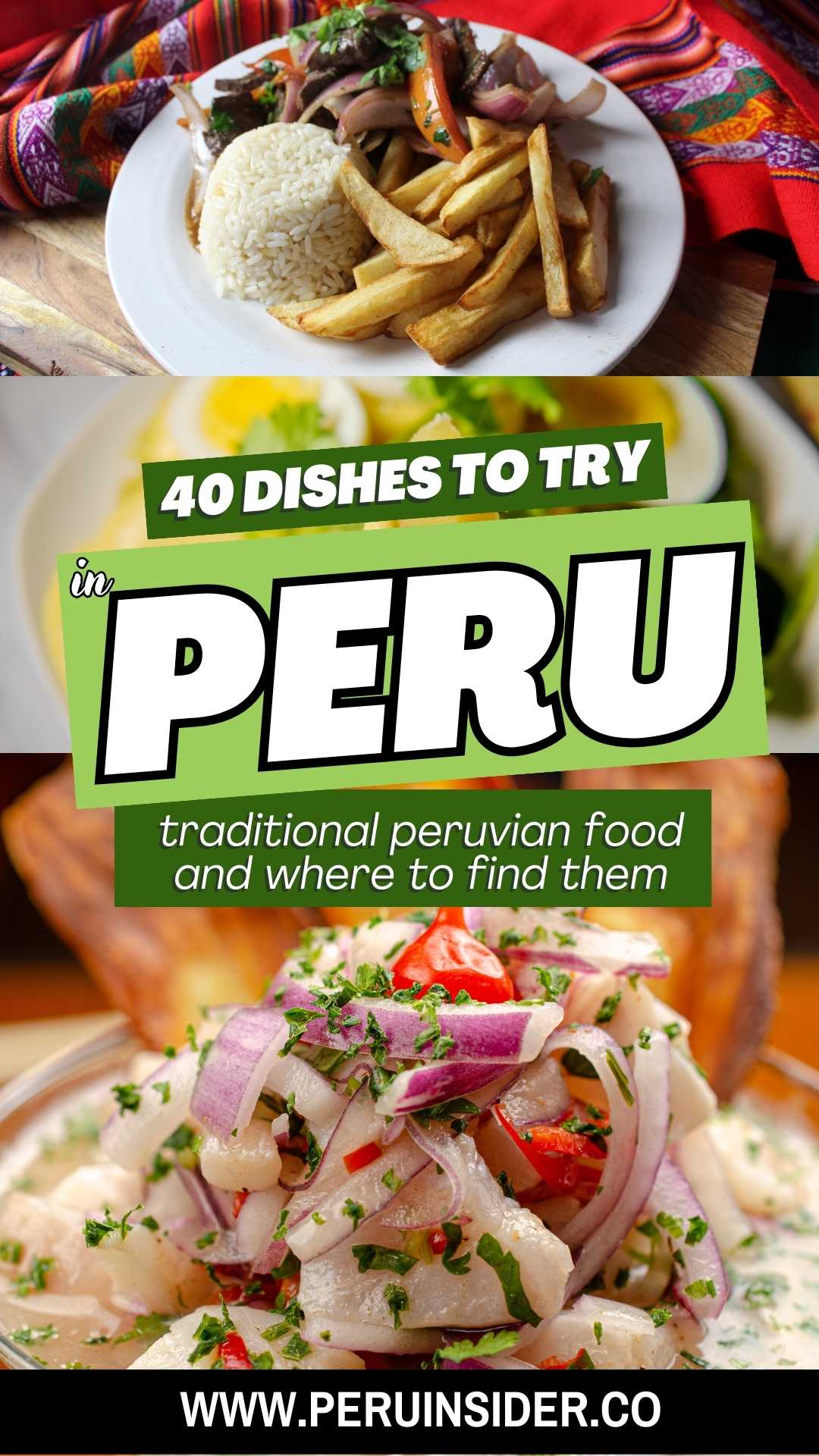
This isn’t just food; it’s a vibrant journey through time and terrain. As you traverse through Peru, let your palate be your guide.
The flavors here are as diverse and rich as the country’s storied history. So, fellow travelers, if you’re looking for a gastronomic odyssey like no other, browse this article and see what Peruvian food you can try for your trip!
Plan your trip to Peru with us! Get expert travel advice and customized trip-planning itinerary from our local experts on the ground.
🥘 What is special about Peruvian food?

What’s special about Peruvian food is its ability to narrate the nation’s story — from ancient traditions to contemporary innovations — all on a single plate.
With 28 individual climates and three main geographical zones – the coast, the highlands, and the jungle – Peru boasts an incredible variety of ingredients, many of which are endemic.
The culinary history of Peru dates back to the Inca Empire, integrating ingredients like potatoes, maize, and quinoa, which are now global staples.
The fusion of indigenous techniques with Spanish, African, Chinese, Japanese, and European influences has led to a unique and flavorful blend of dishes.
Lima, the capital, is often dubbed the “Gastronomic Capital of the Americas.”
Renowned chefs, like Gastón Acurio and Virgilio Martínez, have brought Peruvian cuisine to the global stage, emphasizing tradition and modernity.
Many Peruvian dishes incorporate superfoods like quinoa, amaranth, and maca, which are both delicious and beneficial for health.
Food in Peru is more than sustenance; it’s a mode of expression, a point of pride, and a communal experience.
Festivals, family gatherings, and local celebrations deeply intertwine specific dishes and culinary rituals.
With its restaurants consistently ranking among the world’s best, Peru has firmly established itself as a global culinary powerhouse.
🍲 40 traditional Peruvian food
Here are the best Peruvian food to try when you visit Peru. Remember, Peru is the culinary capital in Latin America and is voted one of the best cuisines in the world so make sure to try these Peruvian dishes!
1. Ceviche
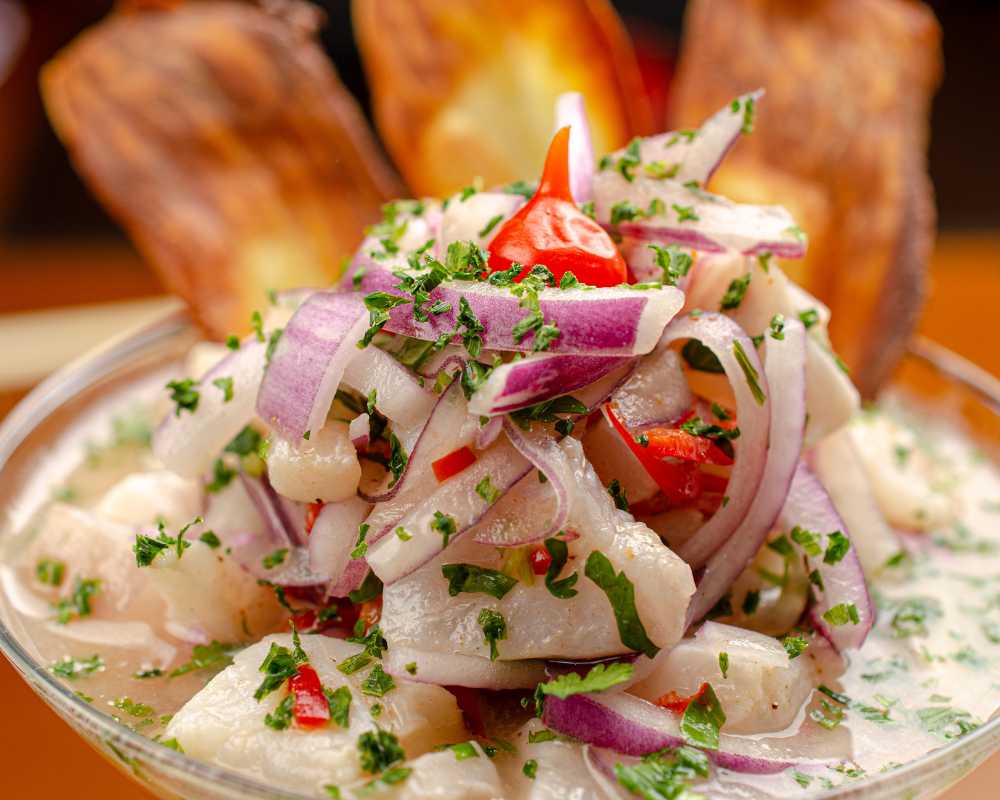
Ceviche is made with raw fish or seafood; it’s marinated in a symphony of lime juice, red onions, and aji peppers until the acidity “cooks” the fish.
The resulting medley is served cold, often accompanied by sweet potato, corn, and lettuce. This plate doesn’t just deliver taste but an essence, making it a beloved coastal staple.
Ceviche’s roots are deeply etched in pre-Colombian history, with evidence suggesting its consumption in ancient Peru over two millennia ago.
Spanish conquistadores introduced citrus, elevating the dish and refining its modern incarnation.
2. Lomo Saltado

Lomo Saltado is a stir-fry at its core; this dish weds marinated strips of beef, sautéed with onions, tomatoes, and chili peppers, with a side of crispy fries and rice.
The melding of savory, tangy, and salty profiles earmarks it as a Peruvian-Chinese fusion favorite.
Originating from the bustling chifas (Chinese-Peruvian restaurants) of Lima in the 19th century, Lomo Saltado is a delicious upshot of the Cantonese influence on Peru following the influx of Chinese immigrants, who brought their culinary flair, ingredients, and wok-cooking techniques.
3. Aji de Gallina
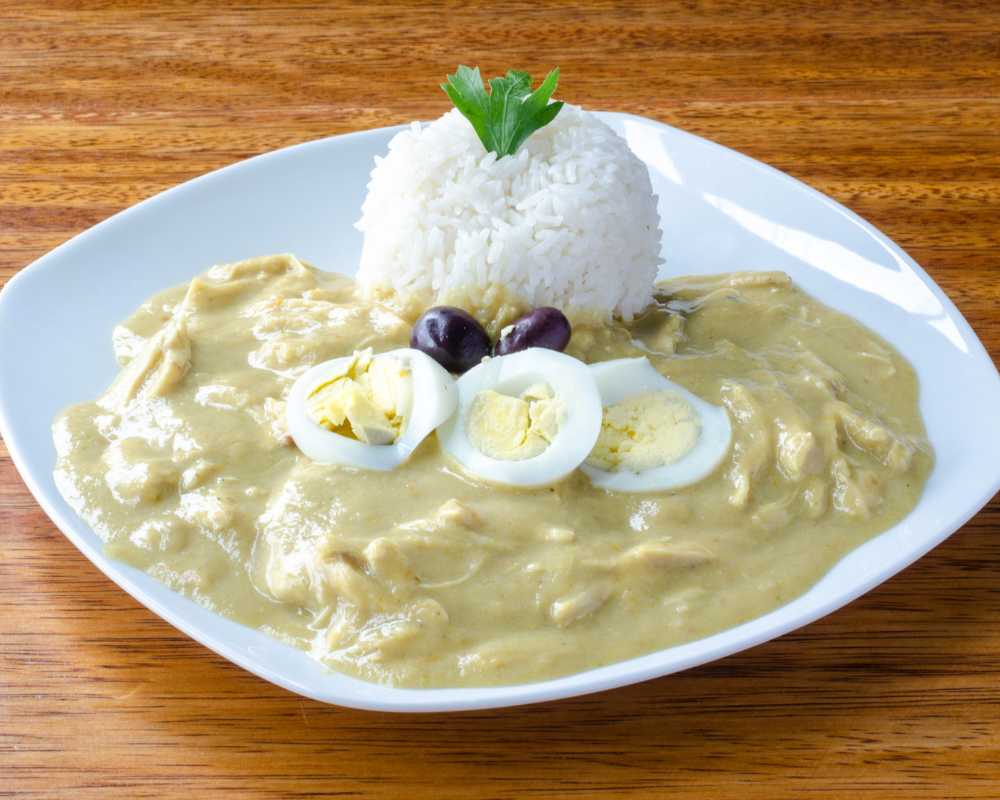
Aji de Gallina is a creamy, spicy stew spotlighting shredded chicken, soaked bread, walnuts, and the star: aji amarillo (yellow chili pepper).
Adorned with olives and boiled eggs, this dish captivates with its intense color and rich texture, delivering a comforting warmth with every spoonful.
The dish, with a nod to Spain’s Moorish influences and Andean chili peppers, showcases the fusion of European and Indigenous cuisines, making it a timeless favorite in Peruvian households.
4. Papa a la Huancaina
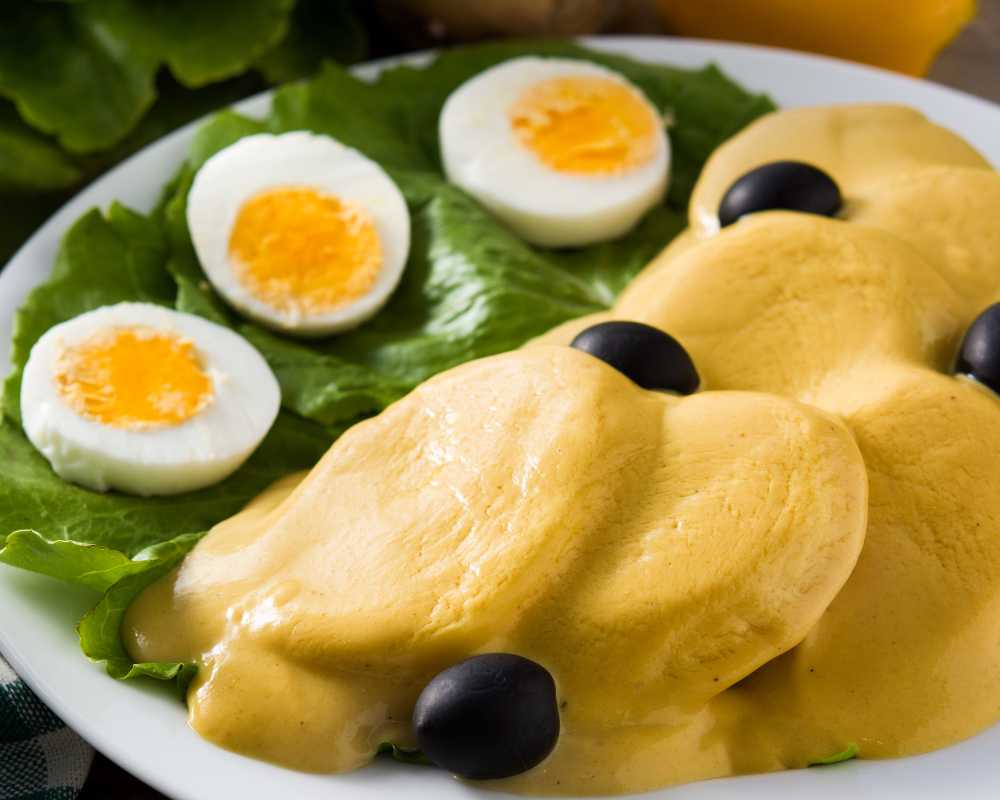
Papa a la Huancaina is tenderly boiled potatoes bathed in a lusciously spiced, creamy cheese sauce, accented with the zest of aji amarillo.
It’s often garnished with olives, lettuce, and hard-boiled eggs, presenting a colorful plate.
Emerging from Huancayo, a city in the Andean highlands, this dish was traditionally prepared by Andean women for railway workers during the construction boom in the 19th century.
Over time, its popularity soared, marking its presence in urban menus and international tables.
5. Anticuchos
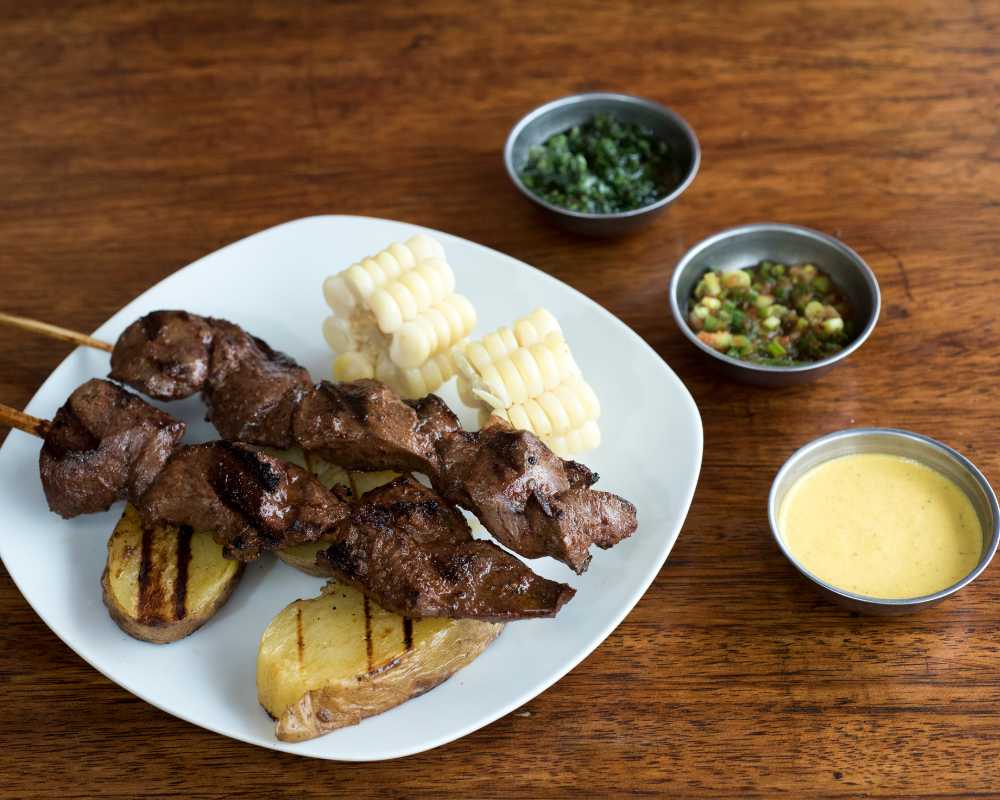
Anticuchos (skewered delicacies) are made with marinated beef heart. These are grilled and served with boiled potatoes or corn. Their smoky aroma and spicy undertones make them irresistible!
The history of Anticuchos dates back to the Incan era, when indigenous people prepared skewered meats.
The Spanish conquest brought a twist with new seasonings and the specific use of beef heart, a remnant of when Spaniards consumed prime cuts, leaving offal for slaves.
6. Rocoto Relleno

Rocoto Relleno is large, spicy rocoto peppers that are meticulously de-seeded, blanched to reduce their fieriness, and stuffed with a hearty mix of meat, vegetables, and spices.
Crowned with cheese, they’re baked to a molten glory. This Peruvian food reflects Spanish baroque cuisine, intertwining with native Andean ingredients.
It speaks of cultural assimilation during the colonial era, symbolizing a harmonious blend of traditions on a plate.
7. Causa Rellena
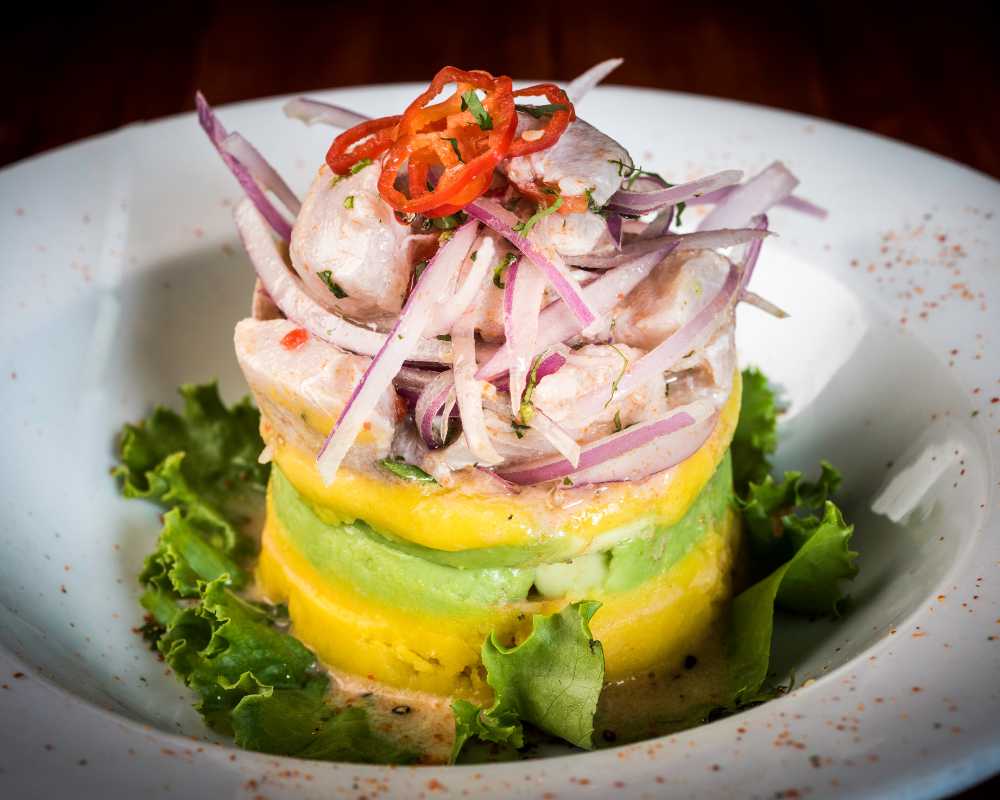
Causa Rellena is crafted as a cold terrine. Yellow potatoes are mashed, seasoned, and layered with fillings ranging from chicken and avocado to seafood.
The dish is a vibrant play of textures, colors, and tastes – earthy, tangy, creamy, all at once.
Its inception is rooted in ancient Peru, where pre-Colombian civilizations cultivated and venerated the potato.
The name “causa” supposedly ties back to the War of the Pacific, where women sold it to support the “cause,” thus intertwining it with nationalist sentiments.
8. Arroz con Pollo
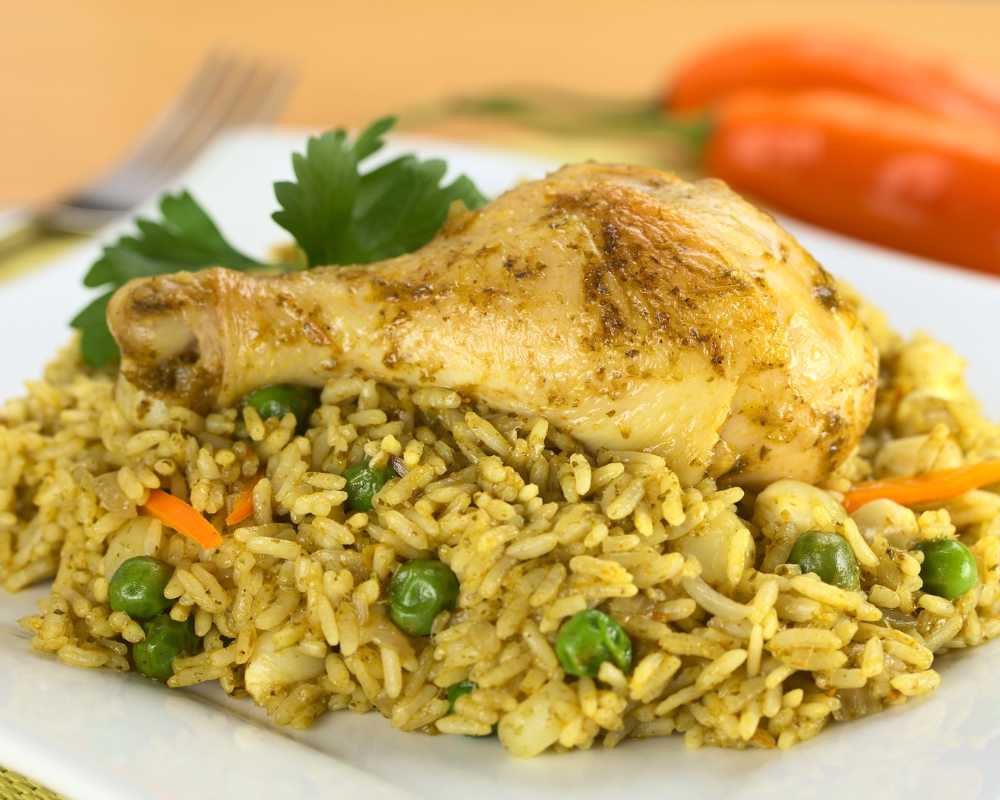
Arroz con Pollo, which translates to “rice with chicken,” is comfort food at its best.
Chicken pieces are simmered with rice, peppers, and cilantro, yielding a green-hued, moist, and flavorful one-pot dish, often accompanied by salsa criolla or a slice of aji amarillo.
The dish mirrors Spain’s paella but showcases a unique Peruvian twist with the addition of native herbs and spices.
Its popularity and widespread adaptation underscore the blending of colonial tastes with indigenous ingredients, creating a beloved national dish.
9. Parihuela

Parihuela is Peru’s ode to its bountiful coast – a robust seafood soup imbued with a mix of fish, shellfish, and aromatic spices, serving warmth and depth in every spoonful.
Born from the coastal regions of Peru, Parihuela traces its lineage to the humble meals of fishermen.
It was conceived to utilize the day’s catch, combining various seafood in a rich broth, a tradition that resonates with seaside communities worldwide.
10. Seco de Cordero
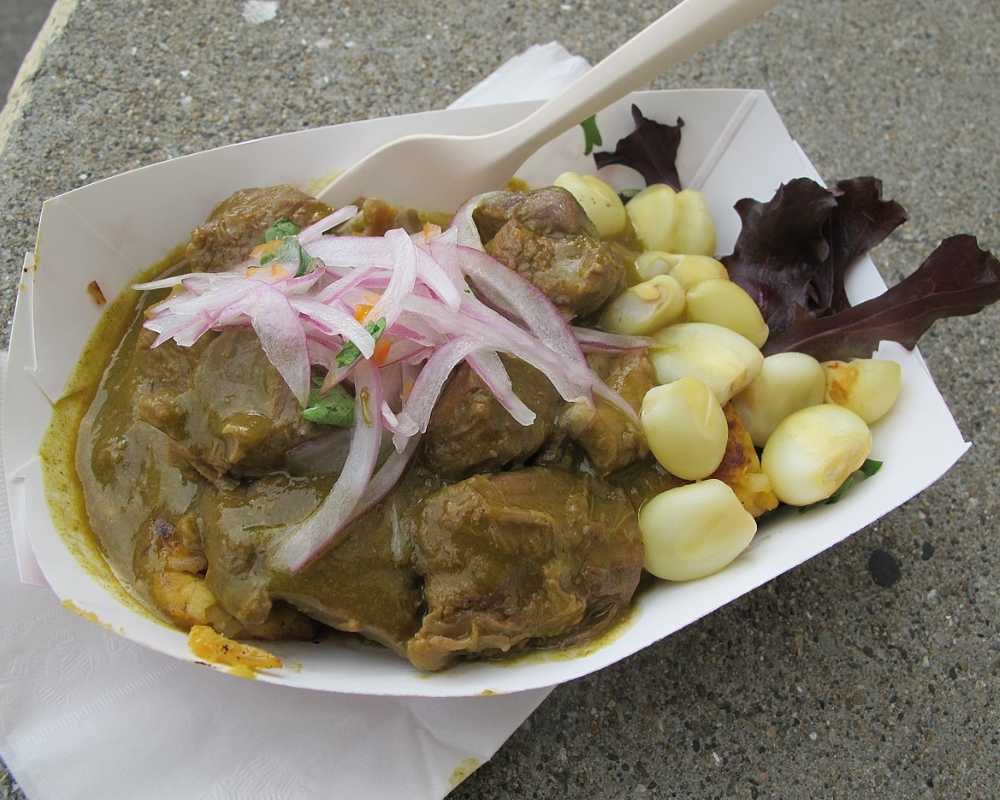
Seco de Cordero is marinated lamb slow-cooked with cilantro, beer, and Peruvian spices until tender, usually accompanied by beans and rice, promising a rich and comforting culinary embrace.
With roots in northern Peru, this dish is believed to be an amalgamation of Moorish flavors brought by the Spanish and the ancient Peruvian method of slow-cooking meats.
Over centuries, Seco de Cordero has become a staple over centuries, celebrating the region’s pastoral heritage and interwoven histories.
11. Tacu Tacu
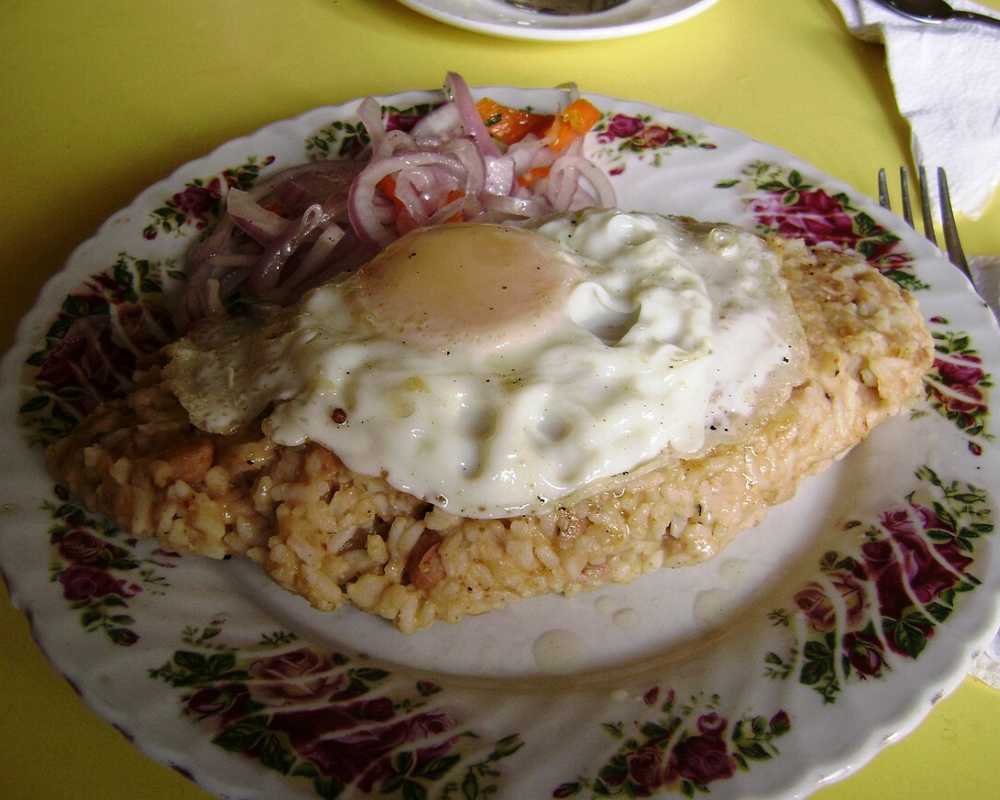
Tacu Tacu is a savory reincarnation of day-old rice and beans, masterfully pan-fried to achieve a harmonious balance of a crispy golden crust with a warm, creamy core.
Emanating rustic charm, it’s frequently complemented with toppings like a fried egg, steak, or seafood, ensuring every plate brims with hearty Peruvian flavors.
Originating in the Afro-Peruvian communities, Tacu Tacu is a poignant testament to resilience and creativity.
Slaves, striving to stretch their modest provisions, melded leftover beans and rice into this now iconic dish, thereby transforming ordinary ingredients into an enduring culinary emblem of resistance and innovation.
12. Pollo a la Brasa
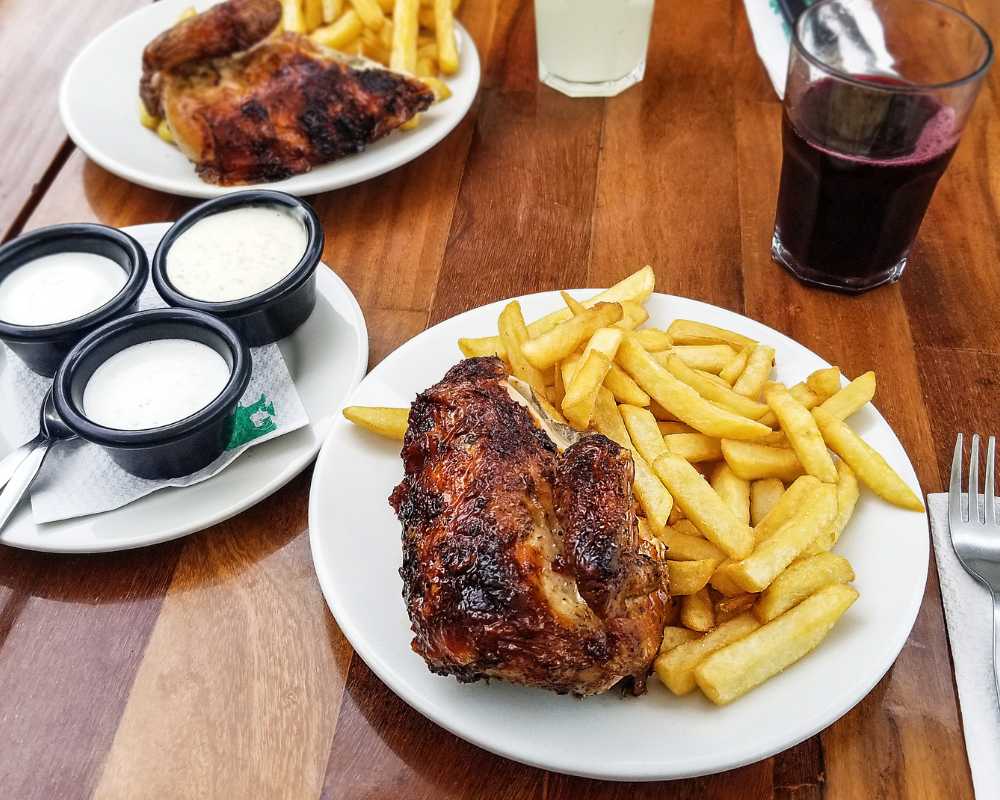
Pollo a la Brasa, much more than mere rotisserie chicken, is a culinary sensation in Peru.
The chicken is roasted through a meticulous marinade of spices, herbs, and secret ingredients, acquiring a smoky allure and a skin that crackles with every bite.
Juicy, succulent, and fragrantly charred, it’s an adventure on a platter.
Birthed in Lima during the 1950s, this dish transitioned from oven-roasted simplicity to a charcoal-grilled phenomenon.
As the tale goes, Roger Schuler, a Swiss resident, and his friend Franz Ulrich, developed the inaugural concept.
Their culinary brainchild swiftly escalated, marking the humble chicken’s elevation to a beloved national treasure.
13. Chupe de Camarones
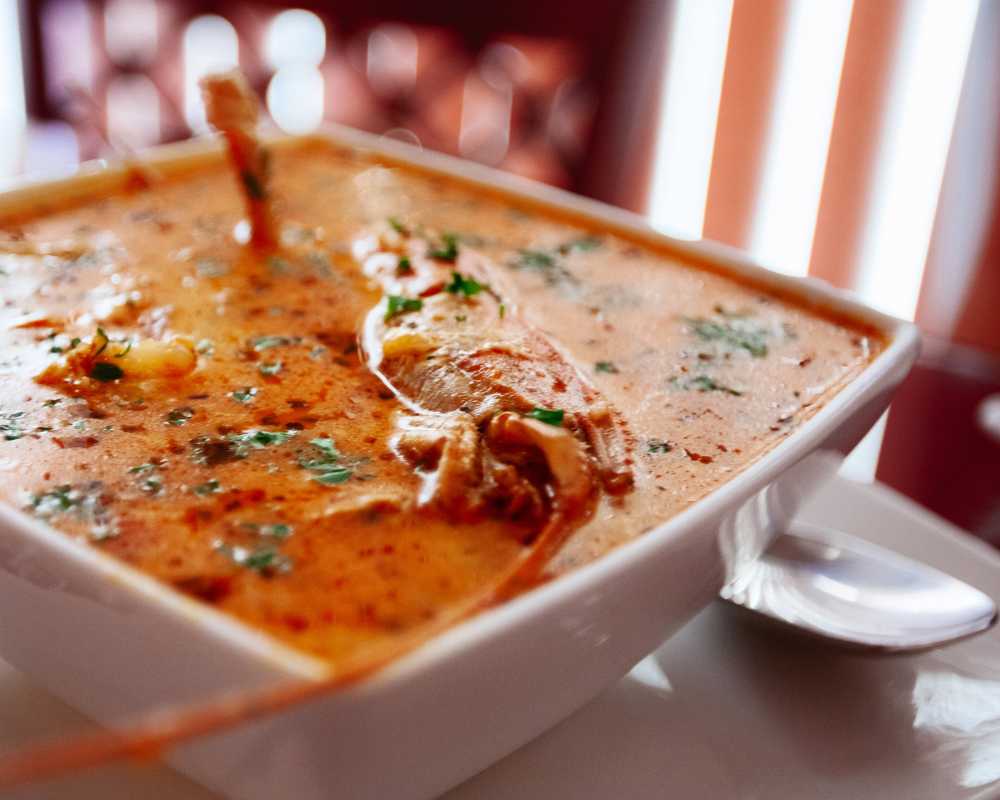
Chupe de Camarones, hailing from the southern city of Arequipa, is a tribute to Peru’s aquatic bounty.
A thick, rich, spicy shrimp chowder, it combines ingredients like Andean potatoes, rice, milk, and the quintessential aji pepper.
The crowning glory – a poached egg, amalgamating its silky textures into the concoction.
Historically, this luxuriant soup symbolizes the fusion of Spain’s baroque culinary legacy with Peru’s indigenous ingredients.
Its birthplace, Arequipa, cradled in the shadow of three volcanoes, benefits from fertile grounds.
The dish utilizes the region’s freshwater shrimp to the fullest, cementing its position as a perennial favorite, especially during Lent.
14. Suspiro a la Limeña
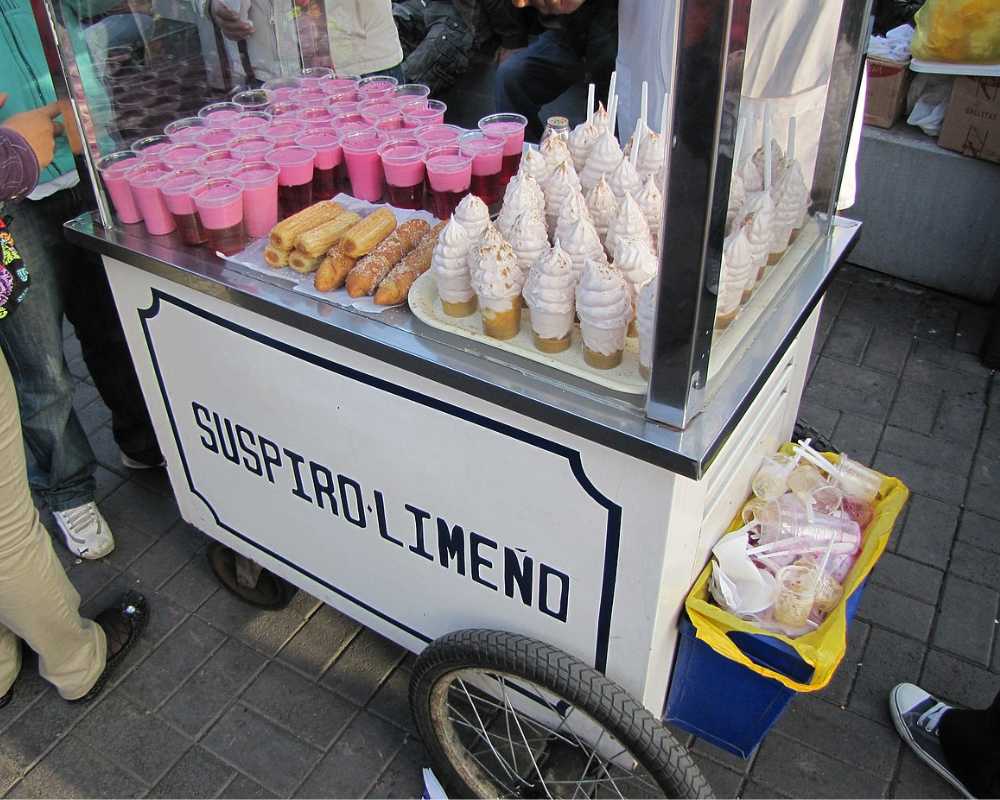
This silky, sweet treat seduces with layers: a caramel-like dulce de leche base paired with a cloud-like port wine-infused meringue topping.
Legends hint that the dessert was dreamt up in Lima during the colonial period.
The poetic name is attributed to the husband of the creator, who, upon tasting it, declared it as soft and sweet as the sigh of a Limeñan woman, etching its romantic legacy in the annals of Peruvian cuisine
15. Picarones

Picarones, the golden rings of Peruvian cuisine, are akin to doughnuts but with a twist.
Made from a dough of sweet potatoes and squash, these deep-fried goodies are drizzled with chancaca syrup, rendering them irresistibly sweet with a slightly crispy exterior and a soft, spongy center.
Their roots trace back to the Spanish occupation, evolving from the introduction of buñuelos, a Spanish dessert.
As the dish adapted to its new home, indigenous ingredients like sweet potato were added, transforming it into a staple treat enjoyed during religious festivals and local gatherings.
16. Alfajores
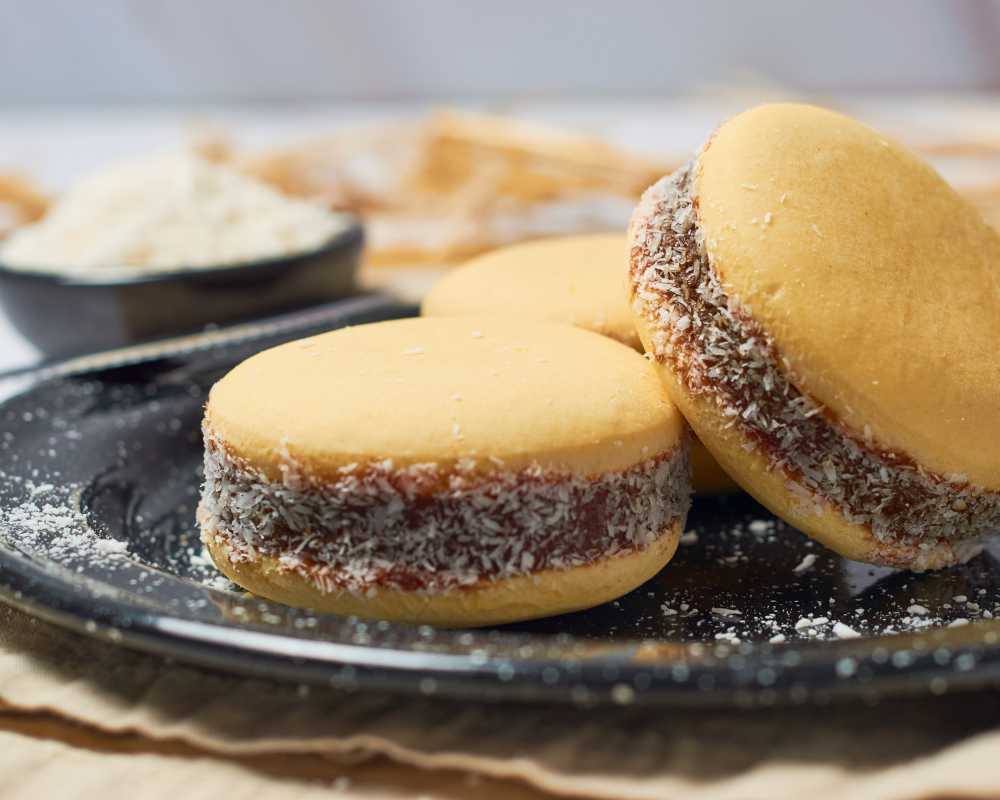
Alfajores are delicate cookie sandwiches, that play with textures and tastes.
Comprising two tender, crumbly cookies filled with a generous dollop of dulce de leche and sometimes sprinkled with powdered sugar or grated coconut, they offer a mouthful of heavenly sweetness.
While these treats are popular across Latin America, each with regional variations, the Peruvian iteration stands out.
Introduced by Spanish settlers and influenced by Moorish sweets, Peru adopted and adapted, making Alfajores a celebrated dessert, especially during Christmas.
17. Turron de Doña Pepa

Turron de Doña Pepa is an anise-flavored, syrup-soaked pastry layered and adorned with colorful candy sprinkles.
Each bite offers a dense, sweet, and sticky delight, making it an intense dessert experience.
Legend has it that a freed African slave, Josefa Marmanillo, created the treat in gratitude to the miracles of the Lord of Miracles (Señor de los Milagros), a revered religious figure in Peru.
Today, it’s especially consumed in October, during the Lord of Miracles procession.
18. Cancha

Cancha, akin to Peruvian popcorn, consists of toasted Andean chulpe corn kernels.
Salty, crunchy, and addictive, it’s the quintessential accompaniment to many traditional dishes, acting as both a snack and a crunchy garnish.
Cancha nods to ancient times, being a staple for the Incan warriors during their expansive reign.
With a simple preparation technique, it remains a snackable testament to the endurance and simplicity of ancient Peruvian culinary traditions.
19. Arroz con Leche
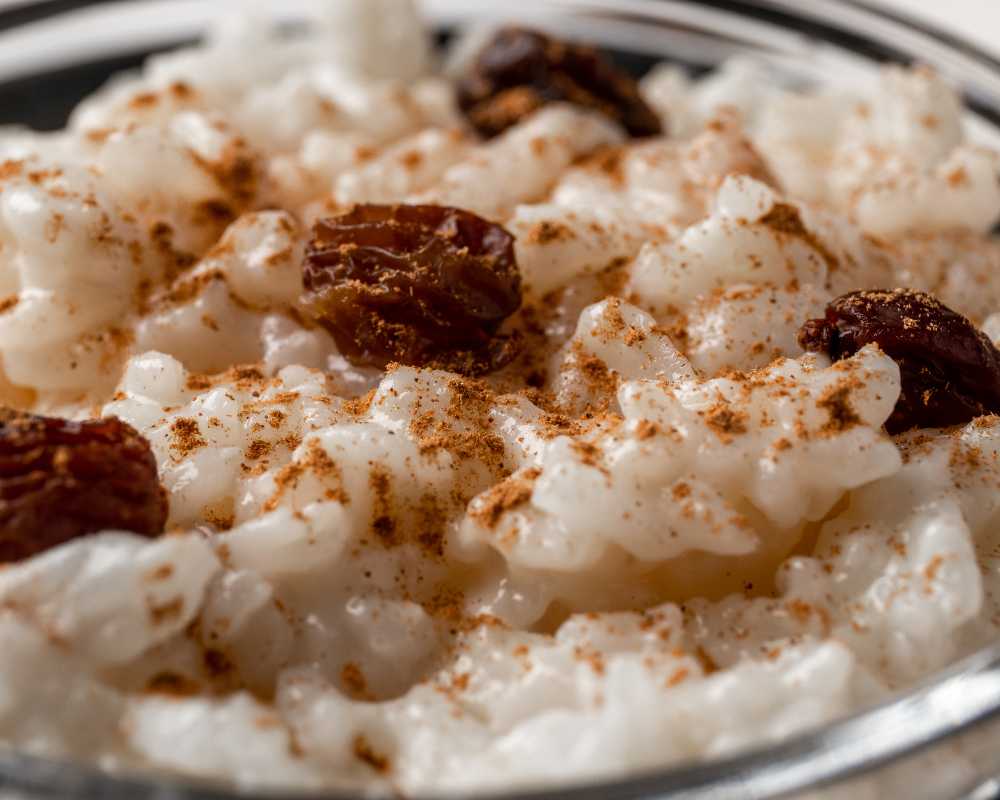
Arroz con Leche invites with its creamy, comforting embrace. Essentially rice pudding, it’s slowly cooked with milk, sugar, and a touch of cinnamon, promising a sweet, velvety experience with every spoonful.
While rice puddings are global, Peru’s version resonates with Spanish colonial influence, enriched and adapted with local flavors.
Widely savored across generations, it’s a dish that narrates tales of grandmothers’ kitchens and festive gatherings.
20. Chicharrón de Pescado
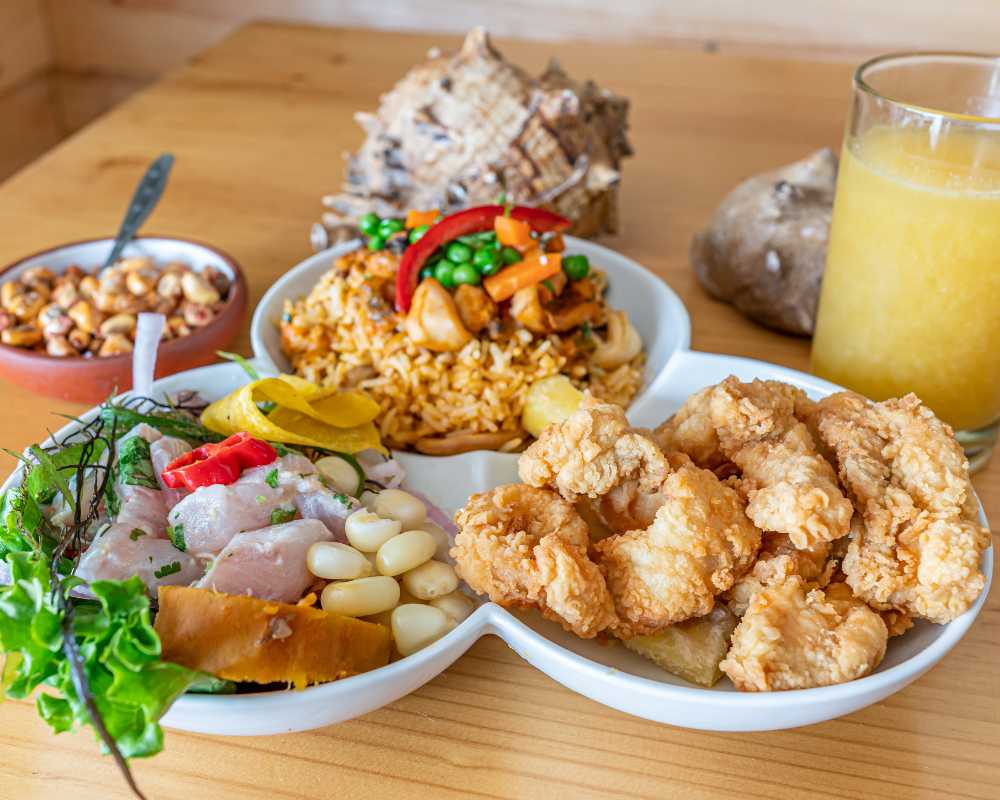
Chicharrón de Pescado offers crispy, golden bites of deep-fried fish morsels, seasoned to perfection.
Typically accompanied by tangy salsa criolla and yucca, it promises an oceanic crunch that’s hard to resist.
While chicharrón traditionally referred to pork cracklings, the coastal regions, blessed with abundant fish, ingeniously adapted the technique to seafood, resulting in a popular beachside snack and a testament to Peru’s versatile culinary landscape.
21. Caldo de Gallina

Caldo de Gallina is a soul-warming hen soup, brimming with succulent chicken pieces, noodles, and potatoes.
Often spiked with aji amarillo, it stands as a therapeutic, hearty broth, especially favored on chilly days or after late-night revelries.
Said to have rejuvenating properties, this soup has humble beginnings, served as a rural morning-after cure.
Today’s widespread popularity underlines its transformation from a rustic remedy to an urban comfort dish.
22. Escabeche de Pescado
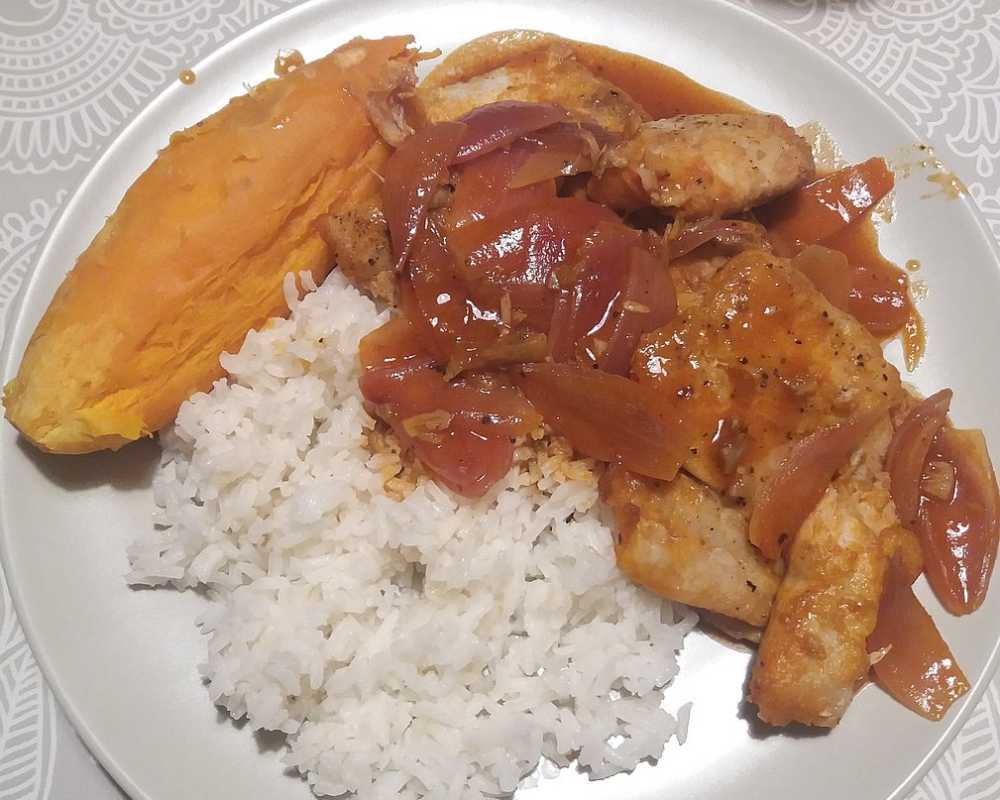
Escabeche de Pescado marries the tenderness of fish with the zest of a vinegary marinade.
Fried fish is bathed in a saucy mix of onions, bell peppers, and spices, resulting in a cold, tangy, and slightly spicy dish.
With roots in the Mediterranean, brought by the Spanish, escabeche found its home in Peru, mingling with local ingredients and preferences, becoming an enticing representation of culinary crossroads.
23. Humitas
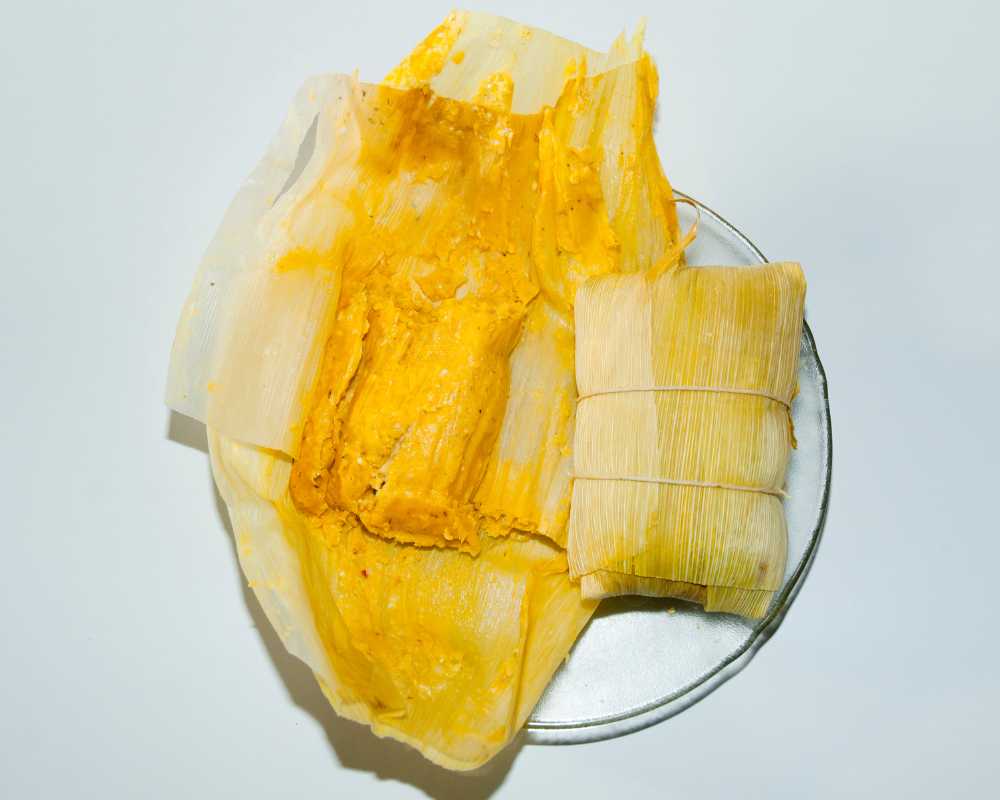
Humitas, a steamy delight, are savory corn cakes made from a mixture of freshly ground corn, cheese, eggs, and spices, steamed to perfection in corn husks.
The result: a moist, flavorful bite, often paired with salsa criolla. A homage to the revered maize, humitas have pre-Hispanic origins.
Consumed by ancient Andean civilizations, they’ve endured, encapsulating centuries of tradition and the undying essence of Peruvian agriculture.
24. Tamales

Tamales are a delightful symphony of texture and taste. A thick corn dough (masa) envelops a variety of fillings, ranging from meats to cheeses, all seasoned with an array of spices.
Wrapped and steamed in banana leaves or corn husks, they unravel to offer a soft, savory treasure.
Their lineage is ancient, tracing back to the indigenous cultures of Mesoamerica and South America.
In Peruvian food culture, tamales have evolved, influenced by the diverse ingredients and flavors of its regions.
25. Papa Rellena

Papa Rellena is an indulgent comfort dish, translating to “stuffed potato.”
It’s precisely that: mashed potatoes molded around a heart of seasoned meat, hard-boiled eggs, olives, and spices. Fried to a golden crisp, it contrasts creamy insides and a crispy shell harmoniously.
Historically, it’s believed to have been concocted by resourceful Peruvian women during the Pacific War, making use of available ingredients to feed their families and soldiers.
Today, it’s a testament to their ingenuity, standing as a beloved staple nationwide.
26. Cuy Chactado

Cuy Chactado is not for the faint-hearted. It’s deep-fried guinea pig, revered in the Andean regions.
Flattened and fried to crispy perfection, its meat is tender and slightly gamey, often compared to rabbit or dark chicken.
Cuy has a sacred and ancient significance in Andean culture. Beyond Peruvian food, it was historically used in rituals and as a means of divination.
Its consumption, especially during major life events and festivals, embeds it deeply in the cultural and gastronomic heritage of the region.
27. Sopa a la Minuta

Sopa a la Minuta is instant solace in a bowl. A hearty beef soup boasting fine noodles, vegetables, and a dash of aromatic spices, it’s often crowned with a poached egg, whose yolk imparts a creamy richness.
Its name, translating to “minute soup,” might hint at its speedy preparation, but its origins are more nuanced.
Born in Lima’s bustling streets and markets, this soup became a quick, nourishing solution for the city’s fast-paced life, blending local ingredients with urban immediacy.
28. Olluquito con Charqui
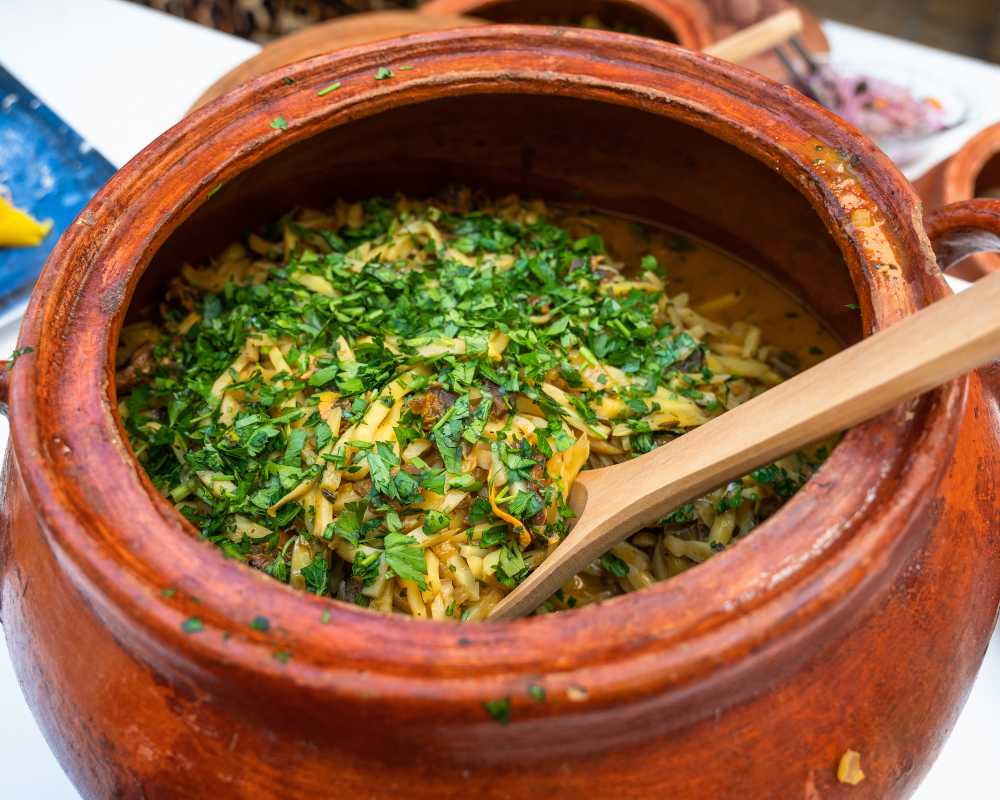
Olluquito con Charqui is a dance of indigenous flavors. Featuring olluco, a tuber native to the Andes, it’s stir-fried with charqui (dried alpaca or beef meat), seasoned with a hint of aji, and served with rice.
Both main ingredients are deeply embedded in the ancient Incan empire.
Olluco, a staple crop, and charqui, an early method of preserving meat, combine in this dish to tell a story of survival, sustenance, and the ingenious culinary methods of a civilization that thrived in the challenging Andean terrains.
29. Carapulcra
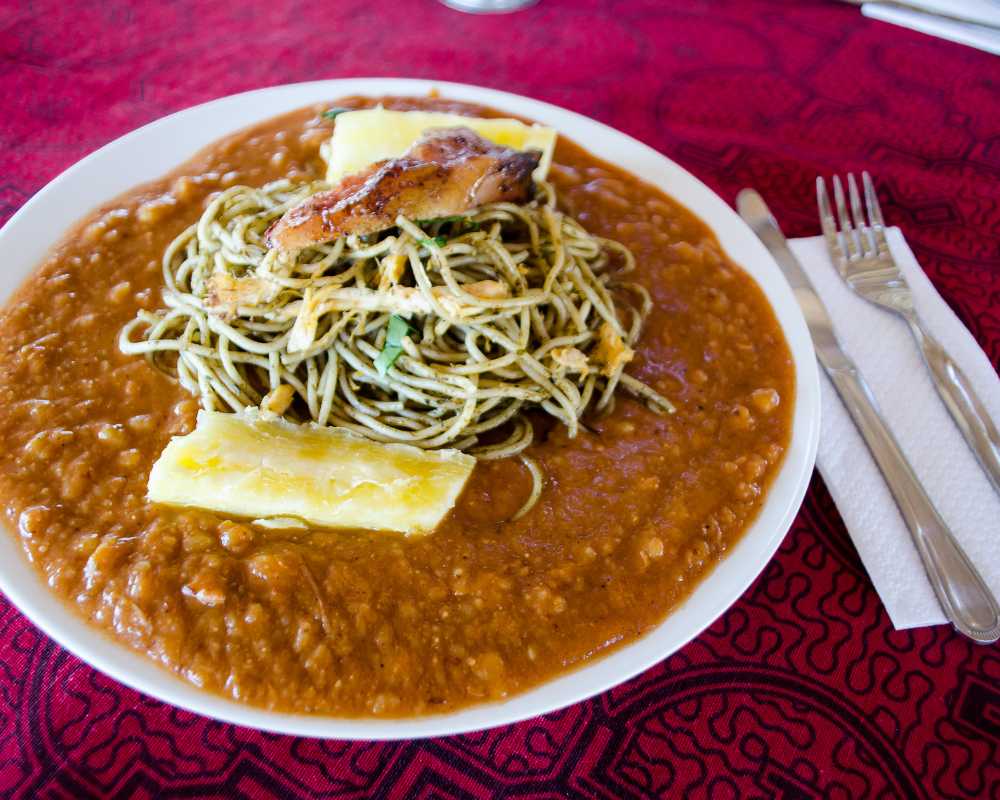
Carapulcra is a symphony of flavors, introducing the palate to sun-dried potatoes stewed with pork or chicken.
This thick, rich stew is aromatic with spices, peanuts, and occasionally chocolate, yielding layers of flavors with every bite.
This dish boasts pre-Columbian roots, having been savored by ancient Peruvians long before the Spanish conquest.
Carapulcra, with its use of dried potatoes, underscores the indigenous innovation of freeze-drying techniques, ensuring Peruvian food availability in the harsh Andean winters.
30. Mazamorra Morada

Mazamorra Morada paints the bowl in deep purple hues and is one of the most colorful Peruvian food.
A dessert made from purple corn, this sweet, jelly-like pudding is flavored with pineapples, apples, cinnamon, and cloves, offering a vibrant, tangy-sweet experience.
Its story intertwines with the ancient civilizations of Peru, who considered purple corn both a food staple and a sacred symbol.
With time, as ingredients and culinary techniques intermingled, Mazamorra Morada emerged, encapsulating Peru’s rich history and its ability to adapt, evolve, and enchant.
31. Sudado de Pescado

Sudado de Pescado invites the diner into a comforting embrace. This dish involves fish gently stewed with onions, tomatoes, and a blend of chili peppers.
The result? A warm, flavorful broth that marries the sea’s bounty with earthy tones.
Historically a coastal specialty, its roots lie in the fishermen communities of Peru, who crafted a way to celebrate their fresh catch while melding the robust flavors of the land.
32. Chicha Morada

Chicha Morada, with its deep violet allure, is a refreshment. This sweet beverage derives its hue and taste from purple corn, complemented by pineapple, cinnamon, and a sprinkle of sugar.
A drink that predates the Incas, its ancient origins associate it with ceremonies and traditional gatherings. While its preparation has evolved over the centuries, its significance as a cultural touchstone remains.
33. Leche de Tigre

Leche de Tigre, translating to “tiger’s milk”, isn’t milk at all.
This citrus-based potion, with hints of garlic, chili, and herbs, serves as the soulful marinade for ceviche. Some even dare to drink it straight, seeking its electrifying zing.
Historically, it’s been hailed for its invigorating properties, often considered a hangover cure and an aphrodisiac. It’s a concoction that encapsulates the fiery spirit of Peru in a shot glass.
34. Pastel de Choclo
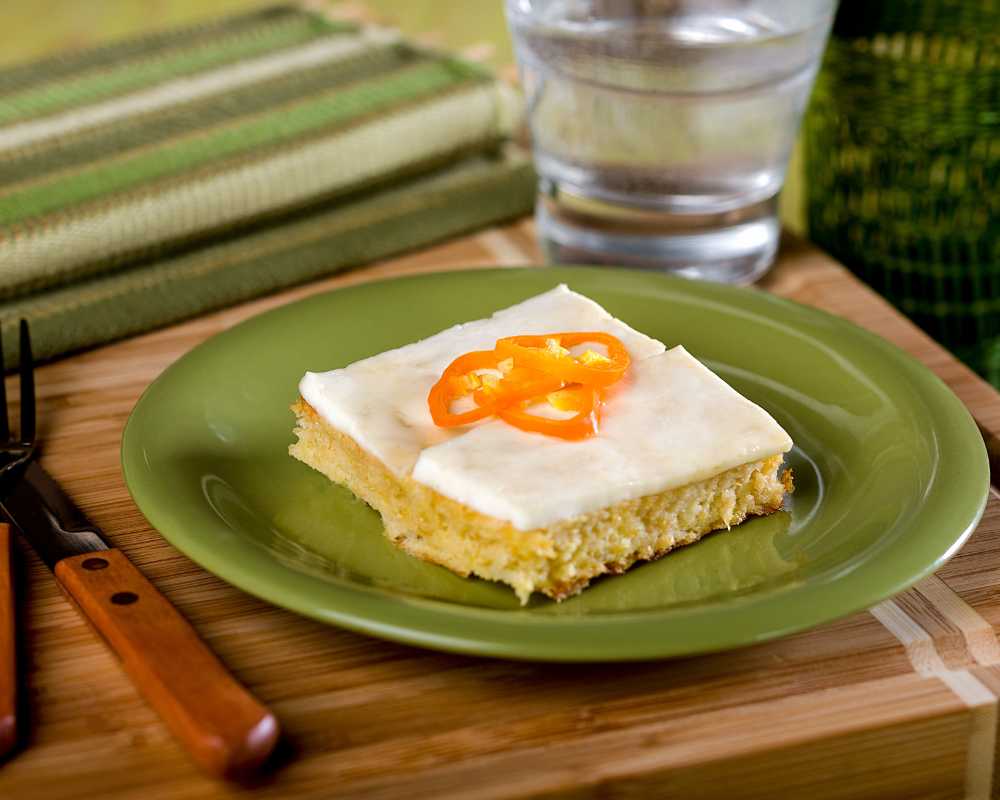
Pastel de Choclo is a savory corn cake is akin to a casserole, with a surface of smooth corn paste concealing a heart of meat, chicken, or cheese, often infused with basil or other herbs.
Drawing from indigenous reverence for corn, this dish evolved during the colonial era, blending Andean ingredients with European culinary techniques, creating a beautiful mestizo offspring.
35. Butifarras
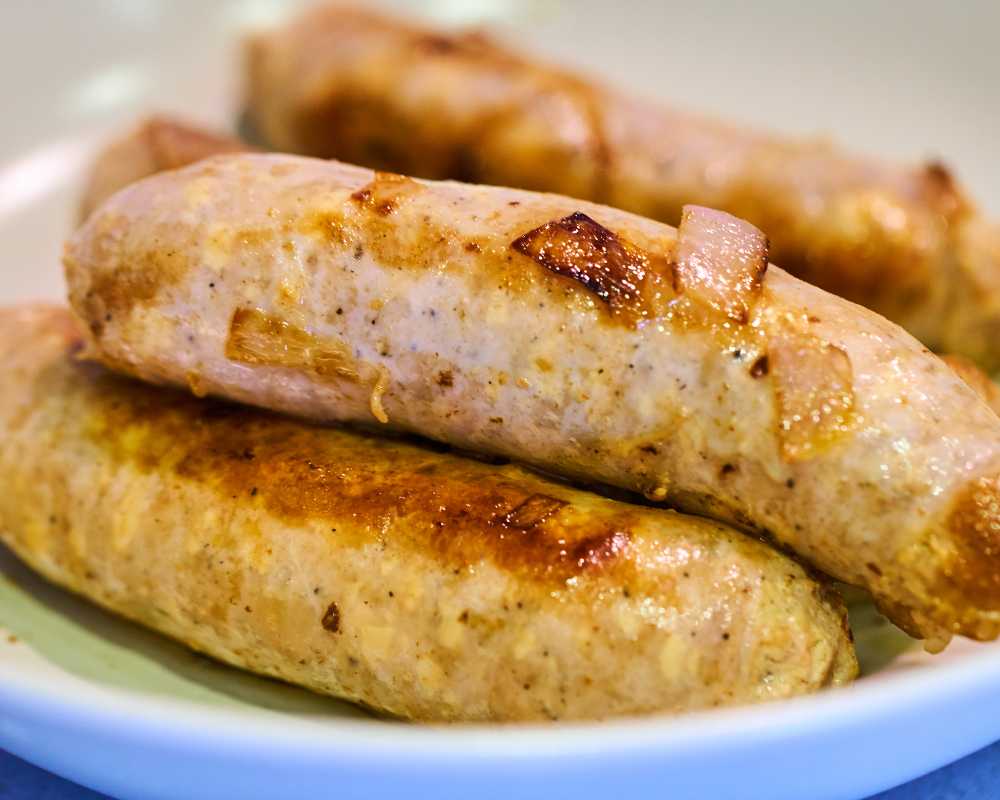
Butifarras might appear as simple sandwiches but are a world in a bite. Using Peruvian ham as the star, they’re garnished with tangy salsa criolla; all cradled in a soft bun.
Birthed in Lima’s plazas and markets, they’re a nod to Spanish culinary influence, adapted and adopted with a Peruvian heart, making them a beloved quick meal throughout the country.
36. Tiradito
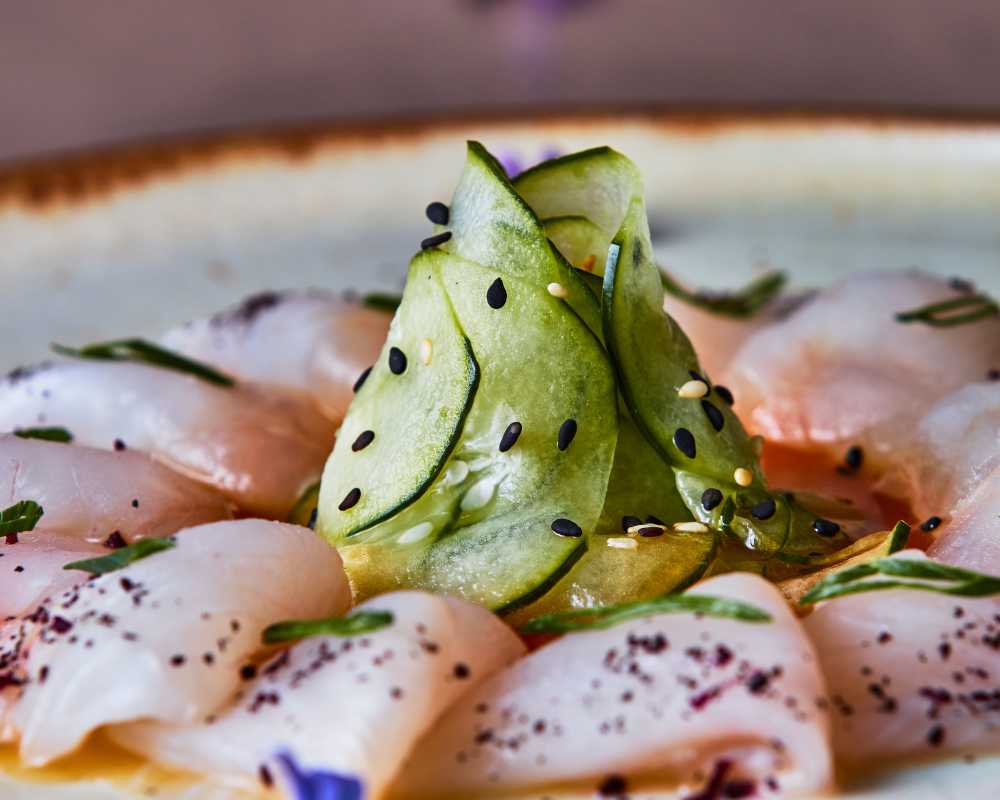
Tiradito, a celebration of the sea, presents raw fish, sliced sashimi-style, bathed in zesty, spicy sauces. Unlike ceviche, it’s onion-free, letting the fish and sauce sing harmoniously.
While its roots are undoubtedly Peruvian, it’s believed that the preparation was influenced by Japanese immigrants, resulting in a beautiful culinary fusion that represents the multicultural fabric of Peru.
37. Ceviche de Conchas Negras
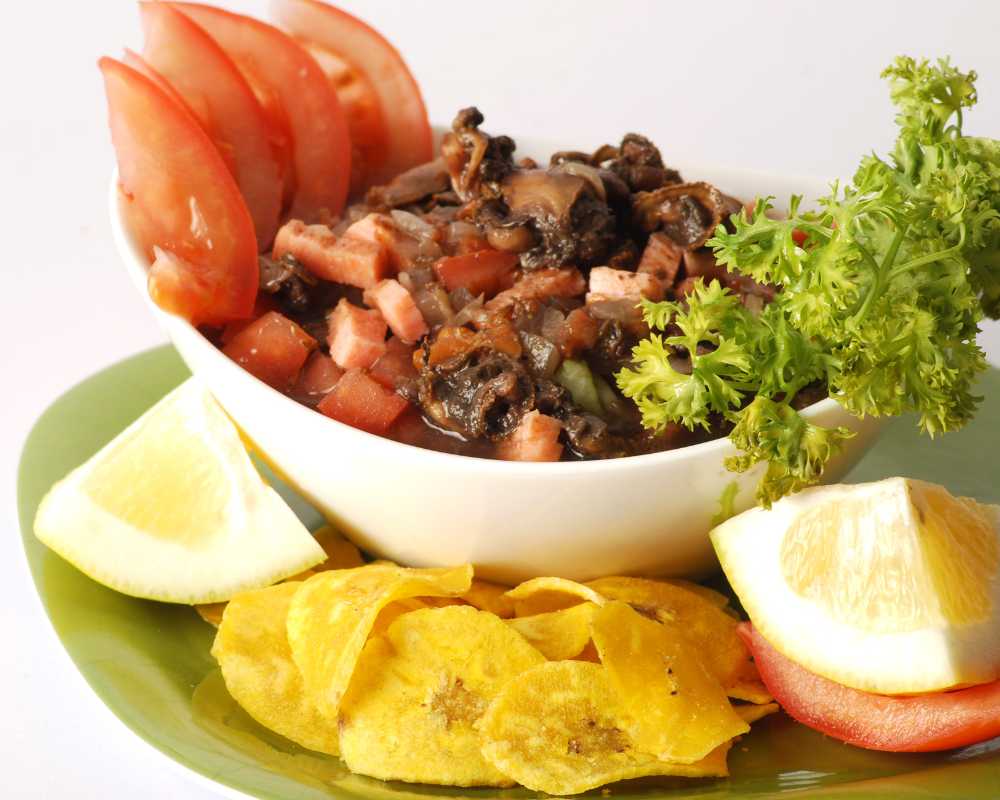
Ceviche de Conchas Negras, with its dramatic appearance, stands distinct. Black clams, with their briny, oceanic flavor, are marinated in the traditional ceviche mix, creating a unique taste sensation.
A delicacy from Peru’s northern shores, it reflects the region’s rich biodiversity and has been cherished by coastal communities for generations.
38. Chairo
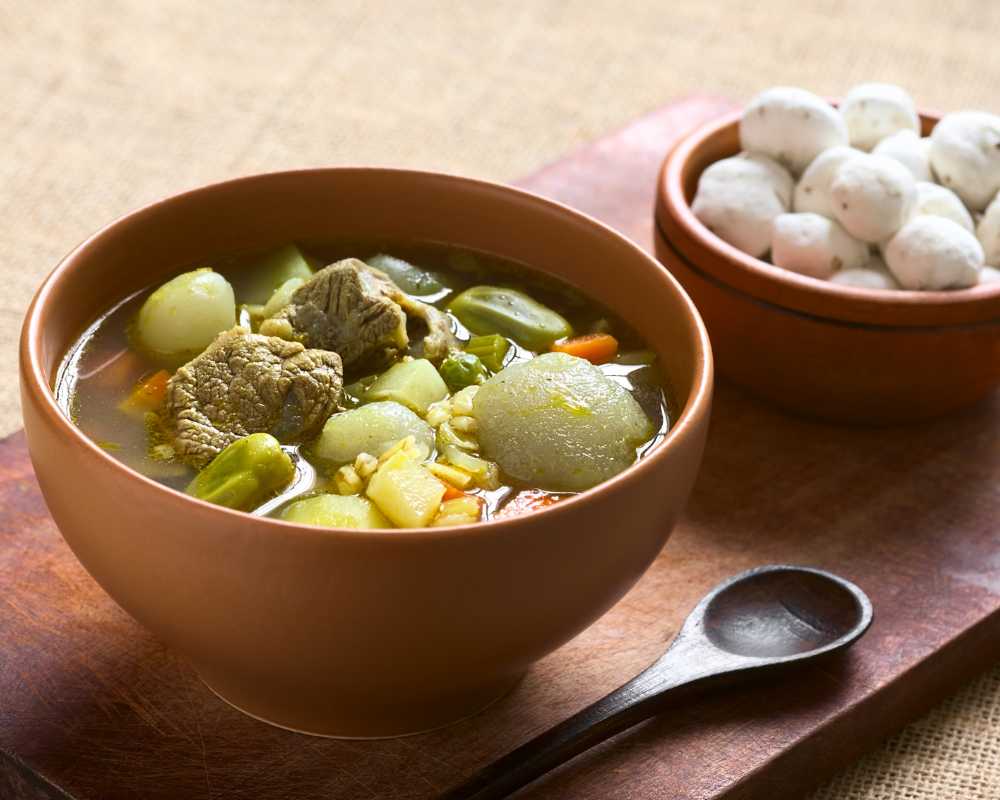
Chairo, a hearty affair, offers solace in a bowl. An Andean concoction features barley, beef, and a medley of vegetables, all mingling to create a rich, nourishing soup.
Born from the highlands, this dish speaks of the resilience of Andean communities, who, amidst the chill, created a soup to warm souls and narrate tales of ancient traditions.
39. Aguadito de Pollo
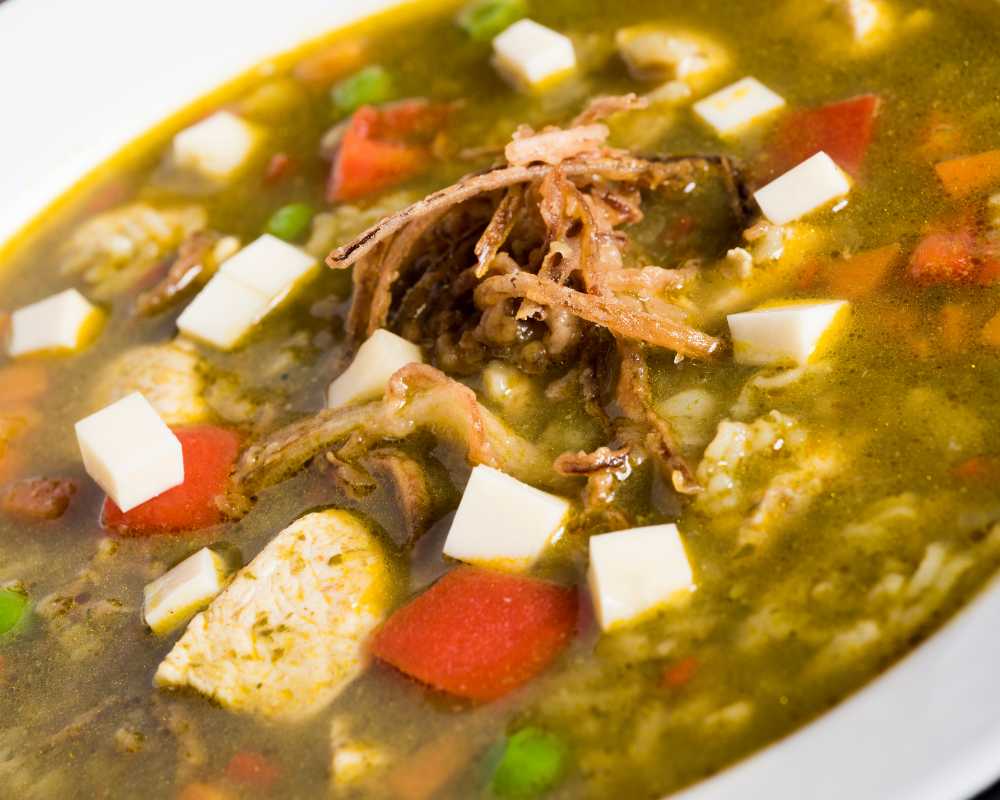
Aguadito de Pollo revives with its vibrant green hue and invigorating flavors. This chicken soup is spiked with cilantro, creating a zesty broth that houses rice and tender chicken pieces.
Often consumed as a remedy for the cold or late-night festivities, its roots are deeply communal, symbolizing care, comfort, and the Peruvian knack for turning simple ingredients into culinary magic.
40. Juanes
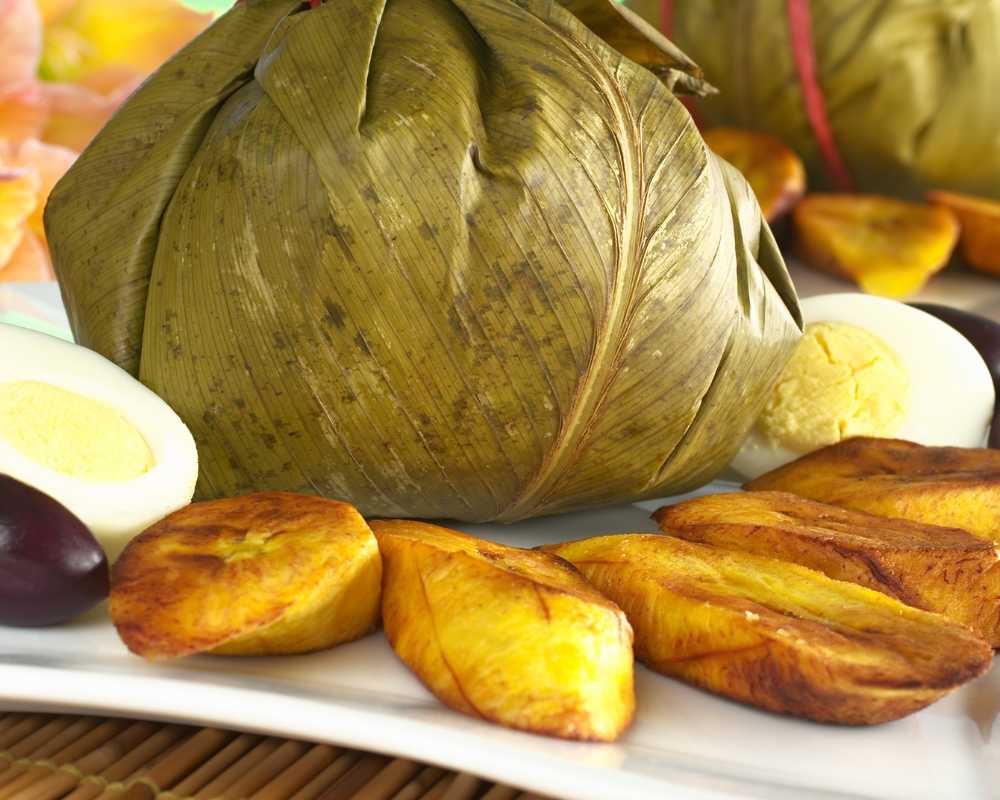
Juanes unwrap to reveal a heart of flavors. These rice tamales encase chicken or fish, seasoned beautifully, all wrapped securely in bijao leaves, and steamed.
Originating from the Amazonian region of Peru, Juanes is named after Saint John the Baptist due to their traditional consumption on his feast day.
Beyond religion, they celebrate the lush bounty of the Amazon and its rich culinary traditions.
🍛 What is typical Peruvian food?
Typical Peruvian food is a rich amalgamation of ancient Incan traditions blended with influences from Spanish, African, Italian, Asian, and even German cuisines.
Staples include corn, potatoes, quinoa, and proteins like seafood, beef, and chicken, often seasoned with vibrant herbs and spices.
⭐ What are the most popular Peruvian foods?
Ceviche, often cited as Peru’s national dish, is incredibly popular, along with Lomo Saltado and Pisco Sour, a signature Peruvian cocktail.
Corn, potatoes, and quinoa, given their ancient roots in the region, are foundational and widely consumed.
🆚 Is Peruvian food similar to Mexican food?
While both Peruvian and Mexican cuisines stem from rich indigenous traditions and share some ingredients like corn and chili peppers, they are distinct.
Peruvian food emphasizes seafood, Andean grains, and a blend of multicultural influences, whereas Mexican food often features tortillas, beans, and a different set of seasonings.


